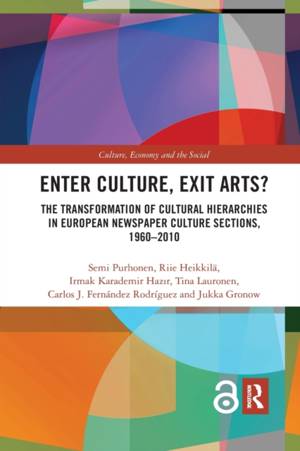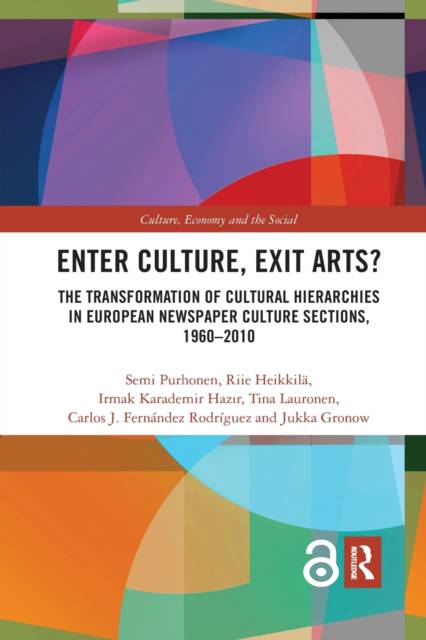
- Retrait gratuit dans votre magasin Club
- 7.000.000 titres dans notre catalogue
- Payer en toute sécurité
- Toujours un magasin près de chez vous
- Retrait gratuit dans votre magasin Club
- 7.000.0000 titres dans notre catalogue
- Payer en toute sécurité
- Toujours un magasin près de chez vous
Enter Culture, Exit Arts?
The Transformation of Cultural Hierarchies in European Newspaper Culture Sections, 1960-2010
Semi Purhonen, Riie Heikkilä, Irmak Karademir Hazir, Tina Lauronen, Carlos Fernández Rodríguez, Jukka GronowDescription
Key debates of contemporary cultural sociology - the rise of the 'cultural omnivore', the fate of classical 'highbrow' culture, the popularization, commercialization and globalization of culture - deal with temporal changes. Yet, systematic research about these processes is scarce due to the lack of suitable longitudinal data. This book explores these questions through the lens of a crucial institution of cultural mediation - the culture sections in quality European newspapers - from 1960 to 2010.
Starting from the framework of cultural stratification and employing systematic content analysis both quantitative and qualitative of more than 13,000 newspaper articles, Enter Culture, Exit Arts? presents a synthetic yet empirically rich and detailed account of cultural transformation in Europe over the last five decades. It shows how classifications and hierarchies of culture have changed in course of the process towards increased cultural heterogeneity. Furthermore, it conceptualizes the key trends of rising popular culture and declining highbrow arts as two simultaneous processes: the one of legitimization of popular culture and the other of popularization of traditional legitimate culture, both important for the loosening of the boundary between 'highbrow' and 'popular'.
Through careful comparative analysis and illustrative snapshots into the specific socio-historical contexts in which the newspapers and their representations of culture are embedded - in Finland, France, Spain, Sweden, Turkey and the UK - the book reveals the key patterns and diversity of European variations in the transformation of cultural hierarchies since the 1960s. The book is a collective endeavour of a large-scale international research project active between 2013 and 2018.
Spécifications
Parties prenantes
- Auteur(s) :
- Editeur:
Contenu
- Nombre de pages :
- 256
- Langue:
- Anglais
- Collection :
Caractéristiques
- EAN:
- 9780367665319
- Date de parution :
- 30-09-20
- Format:
- Livre broché
- Format numérique:
- Trade paperback (VS)
- Dimensions :
- 156 mm x 234 mm
- Poids :
- 390 g

Les avis
Nous publions uniquement les avis qui respectent les conditions requises. Consultez nos conditions pour les avis.






